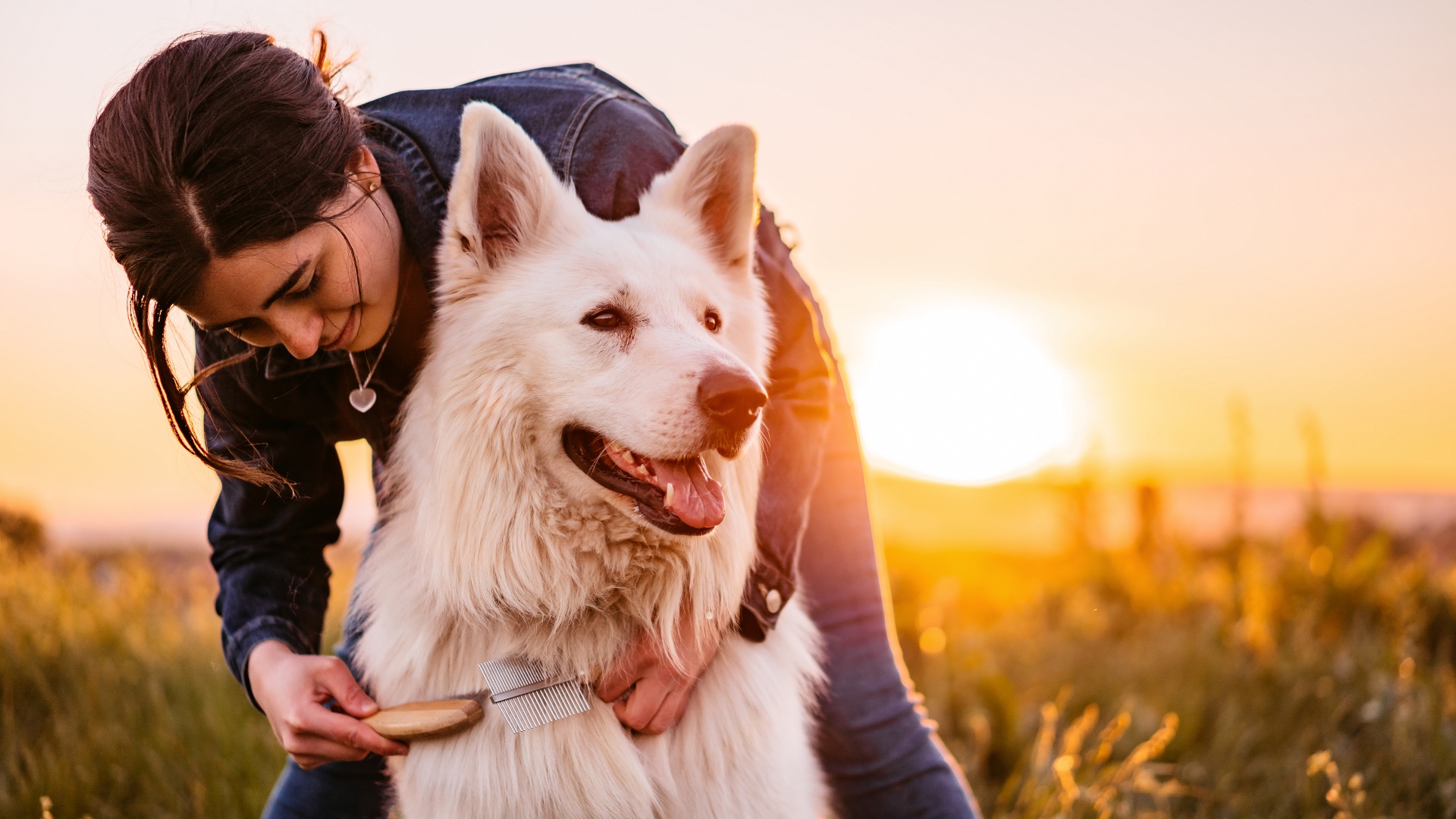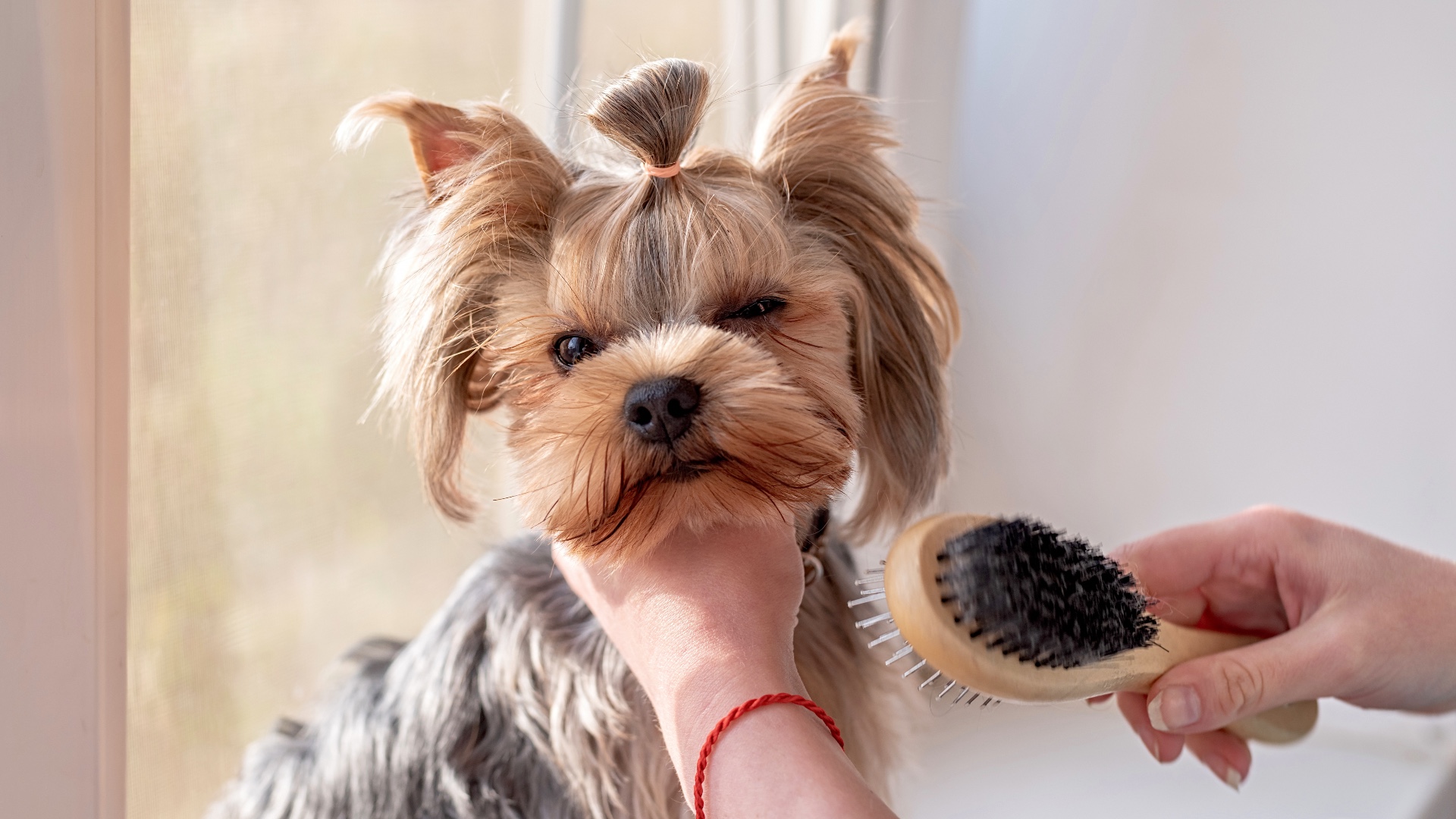How often should you brush your dog?
Most dogs need brushing now and then, but how often should you brush your dog?

If you're a dog parent, you probably have a doggy 'to-do' list, including daily walks, regular tooth brushing and grooming, and monthly parasite treatments. But when it comes to grooming, how often should you brush your dog?
The amount of brushing that your dog needs will depend on their coat type length and whether it’s curly or straight. It will also vary depending on your dog's lifestyle. For example, if your dog goes out for muddy walks regularly or enjoys a paddle in the river, they’re likely to need a lot more brushing than dogs who spend most of their time walking on pavements and footpaths.
What are the benefits of brushing your dog?
Brushing your dog's hair coat doesn't just help remove dried dirt, mud, and debris; it also keeps the skin and fur healthy. The act of brushing will improve airflow to the skin itself and remove any build-up of the oils produced by the skin. As the oil is brushed from the skin surface, it will be distributed along each hair shaft, keeping the coat glossy and healthy-looking. Brushing prevents knots and mats from forming within the haircoat and removes any scabs or crusts on the skin surface. Using a specialist brush to remove the dead undercoat will also help to increase airflow to the skin and prevent dandruff and skin infections. Of course, brushing your dog regularly will also help you spot any lumps and bumps, wounds, or even parasites like fleas!
How to brush a dog's coat
If your dog is muddy or wet, it’s best to wait until they’re dry to brush them. Many dogs enjoy being groomed because it gives them quiet one on one time with their owner. However, if your dog isn’t such a fan and scarpers as soon as they see you holding a brush, you might need someone to help you.
- Try to brush your dog when they are as calm as possible and reassure them if they are reluctant.
- If your dog dislikes being brushed and is reactive, take it slowly and stop as soon as they’ve had enough.
- Use an appropriate type of dog brush for their coat type.
- If your dog has a lot of loose undercoat hair, use an undercoat brush to remove it.
- Brush gently from root to tip, holding the base of the hairs if you meet resistance to avoid pulling the skin.
- Take care in sensitive areas like the ears, armpits, groin, rear, and around the face.
How often should you brush your dog based on coat type?

The amount of brushing that your dog needs will depend on their coat type. To avoid brushing unnecessarily or not brushing enough, you should check your canine companion’s coat type below:
Curly coats
Dogs with curly haircoats require the most grooming of all hair types, and this is due to their tendency to form knots and mats. It's especially common for them to get matted in areas with high movement, such as around their ears, armpits, groin, and bottom. Curly-coated dogs should be brushed at least once a day, taking care to gently tease out any knots rather than pulling.
Short smooth coats
Short-haired, smooth-coated dogs require comparatively less grooming than curly-coated breeds. So, if you own a Dobermann, a Staffordshire Bull Terrier, or a smooth-coated Dachshund, you can breathe a sigh of relief. With this type of hair coat, you probably only need to reach for a dog brush if your dog has dried mud or dirt on them, or if they are shedding.
Long smooth coats
Dogs with a long, smooth coat require a moderate amount of grooming. Although mats aren't formed as quickly as with curly coats, your dog will still develop these tight tangles without regular brushing. Dogs with this coat type include Spaniels and Golden Retrievers. A good rule would be to brush your dog at least every two or three days, paying particular attention to the areas around their ears, legs, and rear end where mats are most prone to forming. During the late summer and autumn, you may find you have to brush your dog more often to remove vegetation such as brambles, burrs, and grass seeds that get stuck in the fur and cause mats or irritate the skin.
Hairless dogs
Despite the name, most 'hairless' breeds are not completely hairless! The remaining hair can be patchy and sporadic and is often coarse and wiry in texture. These breeds usually have hair around their face. So, it's important to brush any food or dribble from around their mouth and keep their eyes and ears clear of crusty debris.
So, can you brush your dog too much?
How often you should brush your dog depends on their lifestyle as well as their coat type. There's no denying it's really important to brush your dog if they have a long or curly coat. However, it's best to keep brushing sessions to a reasonable length since overbrushing can cause pain or even damage the skin. Therefore, brushing the same area for lengthy periods should be avoided. If you notice your dog's skin becoming red or sore during grooming, especially in areas where the skin is thin, sensitive, or fragile, you should stop for a while and return when the skin has calmed down. On the other hand, if you regularly find that your dog's skin looks red or sore, or if there's an offensive smell, you should contact your veterinarian for advice.
Here’s more advice on how to groom a dog, plus our guide to the best dog brushes
PetsRadar Newsletter
Get the best advice, tips and top tech for your beloved Pets
Dr Hannah Godfrey is a small animal vet who graduated from the Royal Veterinary College in 2011 and began work straight away at a busy mixed practice. Initially, she treated all species, but focussed on small animals from 2014. She has a passion for soft tissue surgery, ultrasound, and canine and feline dentistry, having completed additional training in these areas.

